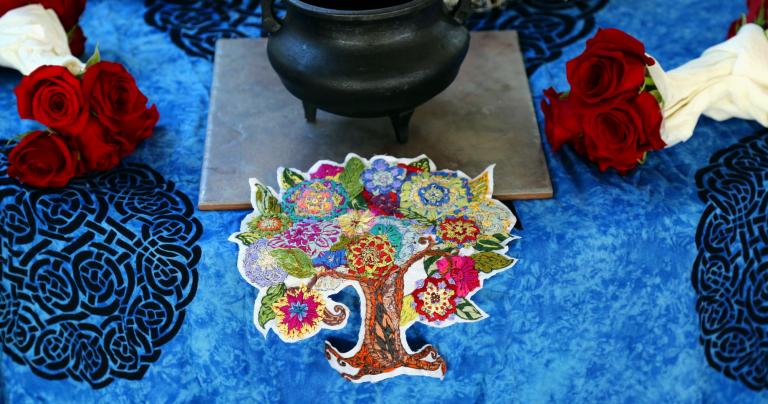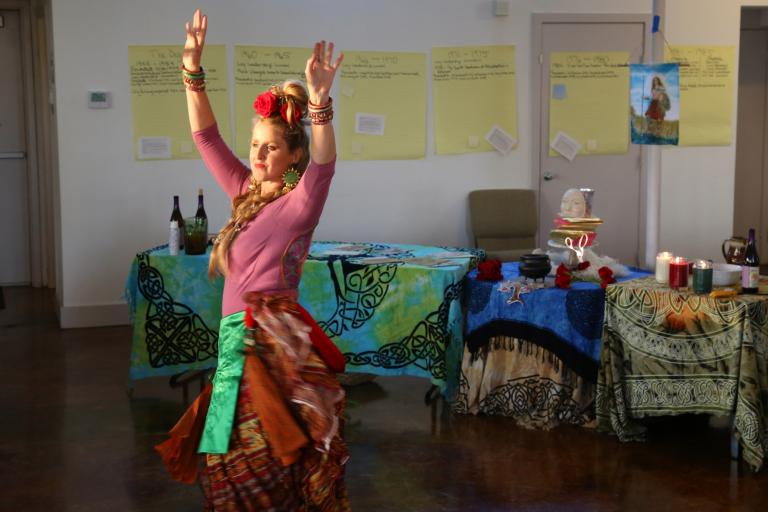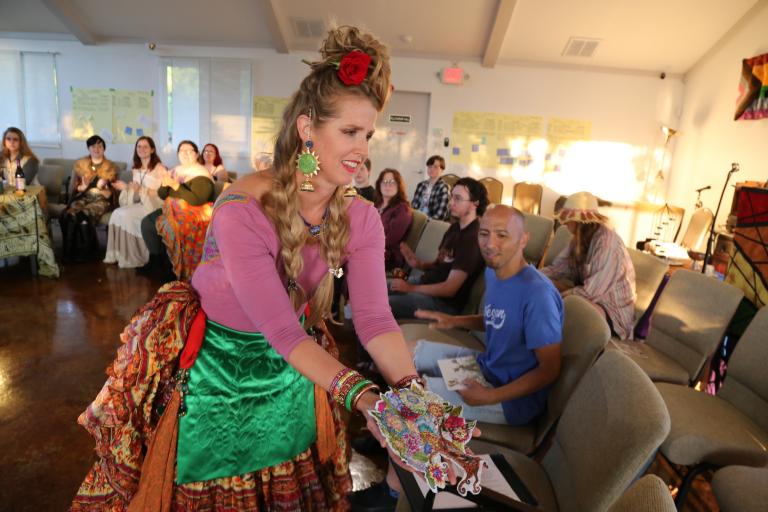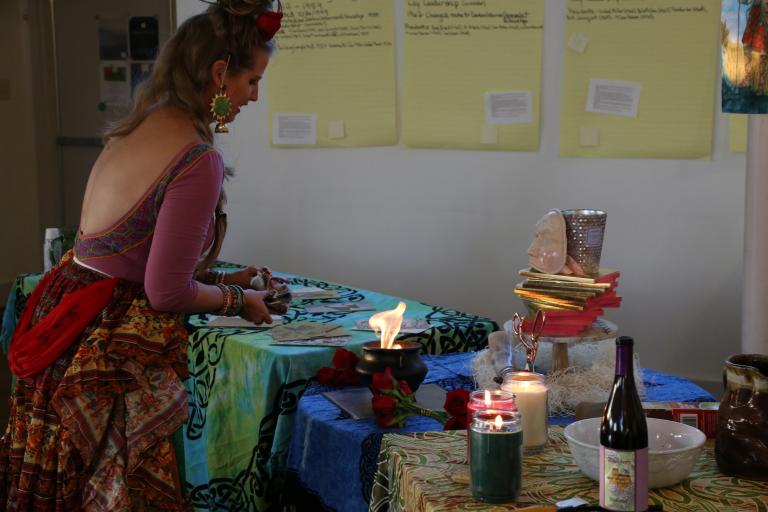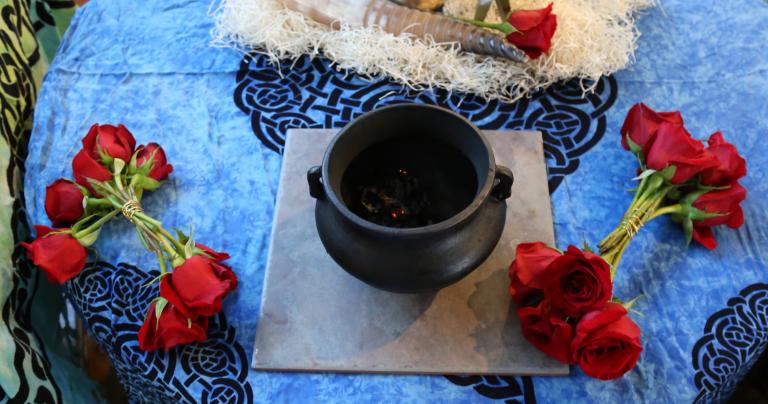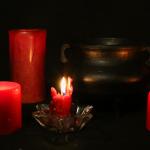Many Pagans and polytheists have an uneasy relationship with sacrifice.
Many of us come to this path through Wicca, where “The Charge of the Goddess” – the closest thing there is to scripture in the modern Pagan world – says “Nor do I demand aught of sacrifice, for behold: I am the mother of all things and my love is poured upon the earth.” Though the Charge has multiple sources, as a whole it dates to the mid-20th century and the beginnings of witchcraft as a religion. It reflects a desire to say “see, we’re not dangerous – please don’t burn us.”
Our uneasiness gets worse when the subject of animal sacrifice comes up. Very few Pagan traditions actually practice animal sacrifice, but even trying to discuss the topic inevitably brings an uproar. Not from vegans or vegetarians, but from omnivores having a gut level reaction against a practice they’ve been told is primitive, barbaric, and unnecessary.
At the same time, we know sacrifice has been a part of religious practice since before religion was organized. Our ancestors made offerings of food and drink, of weapons and art, and of pretty much anything else of value. Atheistic explanations that these were “primitive” people trying to “appease” natural forces they didn’t understand are simplistic at best, and usually involve significant levels of racial and cultural prejudice.
Sacrifice embodies the two greatest Pagan virtues: hospitality and reciprocity. We give to the Gods because we invite them into our rituals and into our lives, and we want to be good hosts. And we give because the Gods are generous to us and we want to be generous in return. Beyond that, when we make a sacrifice we remind ourselves we have enough and so we can share what we have with others.
For the most part we understand offerings of food and drink. Our frugal side may object to pouring perfectly good wine onto the ground, but it’s not like we can’t get more wine. This is how I differentiate between offerings and sacrifices. An offering is given from a place of abundance, but a sacrifice is something that will be missed.
And that brings me to the most beautiful sacrifice I’ve seen in a very long time.
This year’s Denton CUUPS Lughnasadh was led by Heather Campbell. It was dedicated not to the Irish Lugh but to the Gaulish Lugus, who is probably the same deity but ultimately we don’t know for sure. Heather’s spiritual journey led her to Gaulish polytheism and devotions to Epona, Arduinna, Maponos, and eventually to Lugus. Heather intended to perform a devotional dance, but as she was preparing for it, she heard the call to include a sacrifice. Here’s her story, in her own words.
Making my own ritual garb was very important to me. I slated this flowering tree design to sew onto a top or skirt for future meditations. I was casually needling away on it when I saw in my mind’s eye that it was burning.
I tried to relax, stay passive and observe more. I saw I was the one burning it. My Reform Protestant practicality reared up: “What a waste. Why would I spend so much time on something just to destroy it?”
My vision changed to me doing my little weird but totally original dance I do to make sacred space for myself. I questioned “You want me to dance my thingy and then burn this? Oh, in public???”
In that moment I felt a complete relief wash over me. Then my heart sank. And with mixed feelings, I remembered seeing Buddhist monks destroying the beautiful floor mandalas made of colorful powders. But hadn’t the Divines seen how hard it was for me to destroy garb from my childhood religious tradition? Didn’t Lugus understand how toxic the word ‘sacrifice’ had become to me? Wasn’t He aware by now of the pain I suffered and caused my parents when I left that tradition to wing it on my own?
I asked Heather what was going through her mind as she was doing the needlework, knowing it would ultimately be burned.
When I accepted that this project was no longer for myself, I saw it as a vehicle for an energetic signature. I worked on it only when I was at peace and happy to do it. I thought that if I did it begrudgingly or in a hurry, it was best if I didn’t do it at all. There’s plenty I give with that mindset and knew those feelings had to stay separate from this work.
I stitched while I heard lessons from podcasts and while reflecting on my life. The flowering tree became a container for my thoughts about my plant/spiritwork and realizations/questions about the Cosmic Tree – my role in helping the flow along from root to leaf and back to root. This craft project held the memories of shadow work done in the dark and my role as a mom during the day. Moments of confusion, hope, loneliness, and ecstasy.
I have come to believe Lugus travels between realms and protects those who do as well. They clean and heal and teach, create and destroy along the stations of the Tree. This keeps it healthy. I began to see why it was appropriate for me to give this micro Cosmic Tree to Lugus.
I make offerings on a regular basis. I make sacrifices occasionally. But I’ve never put a substantial amount of time and labor into making something for the express purpose of sacrificing it. What does it feel like to watch your beautiful creation burn in the cauldron of sacrifice?
As I watched it burn I felt joy. It was a thank you note, a love letter, an elevated lesson in opportunity cost. I felt overwhelming relief thinking I had done a good job. As of yet I don’t know if Lugus has accepted this sacrifice. I guess time will tell.
Indo-European culture saw fire as the mouth of the gods. My part was to feed it with something full of life. My life. I did the best I could and I’m confident He can’t exchange it for some kitsch at Walmart.
I have a now not-so-secret hope that this item will serve as an anchor or point of connection with Lugus. I’m terrified of the deeper plant/spirit work ahead of me. I’ve made many mistakes and have had many failures. Also, I can’t wait to see what I’m asked to make and do next.
Finally, I asked Heather what she would say to someone – especially a Pagan – who just doesn’t understand sacrifice.
I totally get it. All the hours and months of stitches. Letting perfectly good food sit on an ancestor shrine was so foreign to my kids when our family began ancestor offerings. It smacked against their overculture, their appetites, their unawareness that physical objects are envelopes of intent.
It’s not lost on me the difficult issues of blood and animal sacrifice along with attendant questions of consent and surrender. I still have many questions and am pretty certain that if another human had asked me to do this, I would have heartily declined. I won’t get into the pathological ways sacrifice can be presented in a corporate church or by predatory clergy.
For the moment though, for a moment, I laid all this messy baggage down. I laid down my old definition of sacrifice as giving up something of value so I can get something even more valuable in return. I don’t feed my children and animals as manipulation to get something more out of them in return, so I won’t do that with Gods or ancestors or spirits either. Reciprocity and hospitality are not manipulation or coercion. They’re healthy relationship.
I now see sacrifice as a celebration, a willing acknowledgment of my part in the gift/life cycles. Why should what I make last forever, and why shouldn’t Gods consume beautiful things made by humans? I look at all the beauty I consume on a daily basis. I did keep a photo of the tree that at some point I will delete. Impermanence adds poignant beauty to my life. This sacrifice reminded me of this and I am grateful for the lesson.
Immediately after the ritual I knew I had to write about it. Our wider Pagan and polytheist communities need to see examples of sacrifices done well. But it needed to not just be my reporting and analysis – it needed to be the words of the person who made the sacrifice. I thank Heather for sharing her thoughts and experiences with us.
And I thank her for making our community devotion to Lugus especially meaningful by making such a beautiful sacrifice.
Also, I’m pretty sure the sacrifice was accepted.


